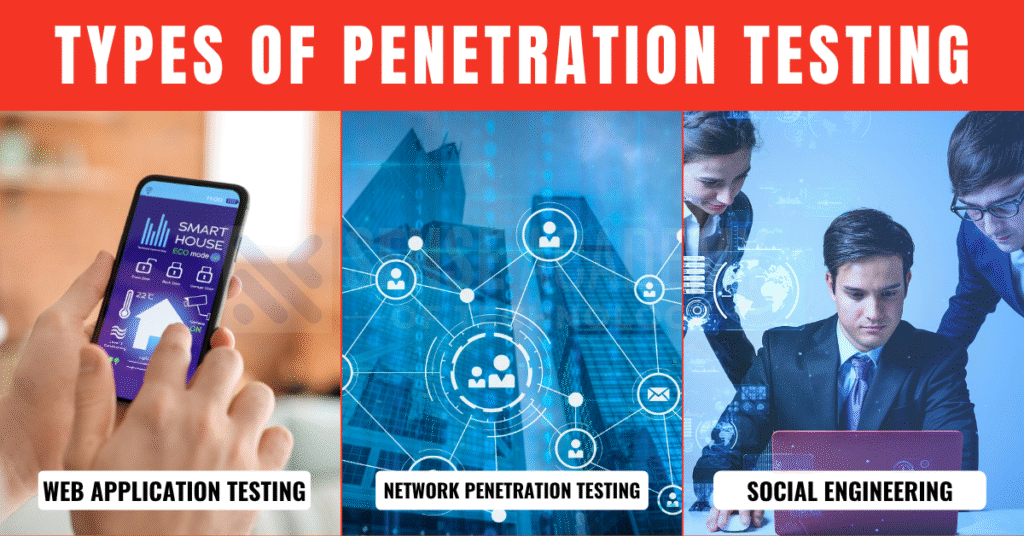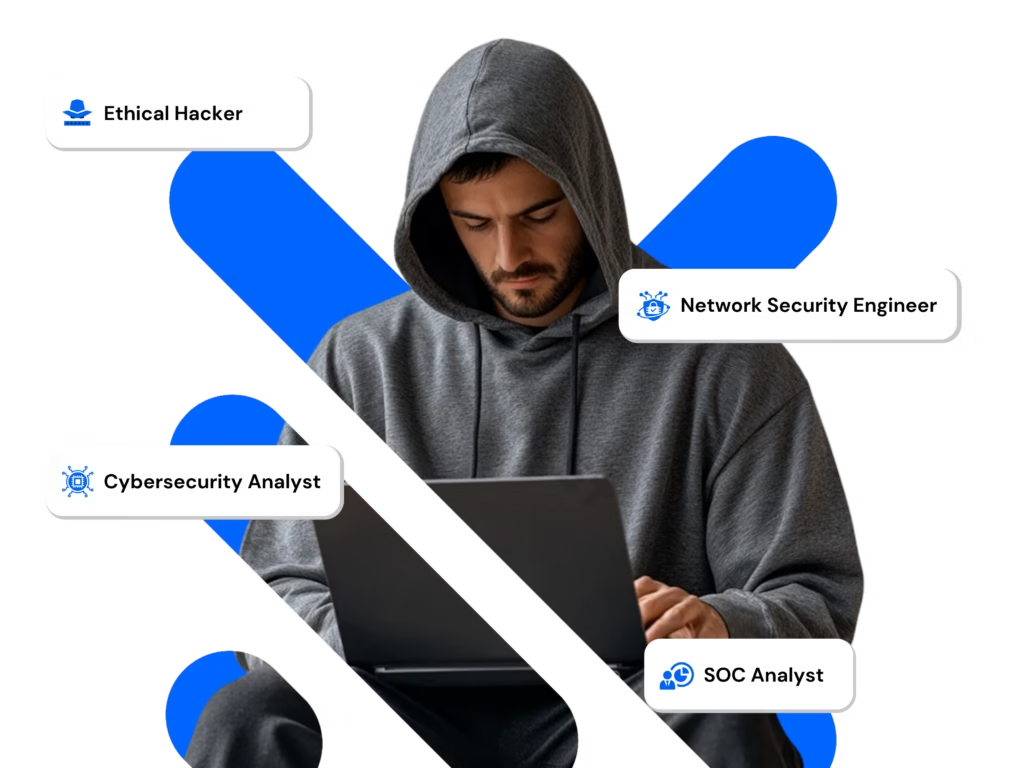
Here is a complete career guide for beginners to become penetration tester.
In today’s cybersecurity industry, penetration testing—also referred to as ethical hacking—is one of the most fascinating and desirable positions. Because cybercriminals are a constant threat to enterprises, competent penetration testers are required to mimic actual attacks, find weaknesses, and assist in securing systems before criminals can take advantage of them. Becoming a penetration tester requires newcomers to establish a solid foundation in operating systems, networking, and cybersecurity principles. To help you get started in penetration testing successfully, this guide will take you through the necessary knowledge, abilities, certifications, study materials, and career path.
Table of Contents
What is Penetration Testing? And why it’s important in todays world
Penetration testing, also referred to as ethical hacking, is a security technique in which experts mimic actual cyberattacks on networks, systems, or apps in order to find weaknesses before malicious hackers do. Cyber risks are changing quickly in today’s digital-first society, where companies rely significantly on technology and keep enormous volumes of sensitive data online. Because it helps companies keep ahead of hackers, adhere to industry standards, and safeguard their customers, brand, and reputation from data breaches, penetration testing is essential
Types of Penetration Testing

Web application Testing
The objective of web application penetration testing is to find security holes in web-based platforms, portals, and websites. Testers mimic attacks such as cross-site scripting (XSS), SQL injection, and authentication bypass in order to find security holes that might reveal private user information or provide illegal access.
Network penetration Testing
In order to identify flaws in servers, firewalls, and network protocols, this kind targets both internal and external networks. It assists in locating open ports, misconfigured systems, and weak services that an attacker might use to access a network or interfere with regular business operations. Finding vulnerabilities that an attacker could use to obtain unauthorized access or disrupt with operations, such as open ports, improperly configured systems, and unprotected services, is the aim.
Social Engineering
Social engineering testing looks at how readily workers can be tricked into disclosing private information. It uses phony calls, phishing emails, and impersonation techniques to test human behavior, which is cybersecurity’s weakest link. To test employee knowledge and response, tactics including phishing emails, vishing (false phone calls), impersonation, and even physical entrance attempts are employed.
Also visit – what-is-penetration-testing-types-and-tools for more penetration information.
Skills required to become a Penetration Tester

Strong Networking and Operating Systems
Understanding how systems function is an essential requirement for breaking into them. Network protocols, routers, firewalls, and TCP/IP must all be thoroughly understood. Additionally, as most real-world infrastructures use a combination of Windows and Linux, you should feel at ease working in both environments.
Knowledge of Programming and Scripting
Scripts are frequently written by penetration testers to automate processes or take advantage of security holes. High-value languages include Python, Bash, and PowerShell. Knowing JavaScript, HTML, and PHP improves your ability to find and take advantage of web-based vulnerabilities when testing web applications.
Understanding Pentesting Tools
Get practical experience using industry-standard tools including as Nmap, Burp Suite, and Metasploit through the use of organized frameworks such as MITRE ATT&CK and OWASP Top 10. Your ability to recognize, take advantage of, and report vulnerabilities is sharpened by this combo, exactly like real-world attackers would, but in an ethical manner.
Read top-10-penetration-testing-tools to know more about tools.
Essential tool every aspiring penetration tester should learn
Network Mapper, or Nmap
Nmap is a powerful open-source tool for security auditing and network discovery. It assists in locating open ports, active services, and live hosts. To scan and map a network before launching any attacks, it is essential to learn Nmap.
The Burp Suite
A popular tool for online application penetration testing is Burp Suite. By acting as an intercepting proxy, it enables you to record and alter browser-server traffic. It is frequently used to identify security holes such as SQL injection, XSS, and authentication problems.
Framework for Metasploit
With the help of the advanced exploitation tool Metasploit, you may identify, test, and evaluate vulnerabilities. It includes a vast collection of payloads and exploits. When doing ethical hacking evaluations, this tool is particularly helpful in mimicking actual attacks.
Career path in penetration Testing
Entry level jobs
The first thing a security analyst or junior penetration tester learns is the basics of ethical hacking. Nmap, Burp Suite, and Wireshark are among of the tools you’ll use to help with vulnerability scanning, basic testing, and report documentation. This phase strengthens your practical abilities and fundamental understanding of cybersecurity.
Mid-level jobs
By performing thorough penetration tests across networks, web applications, and systems, you assume greater responsibility in mid-level positions like penetration tester or vulnerability management analyst. In order to assist enterprises in improving their security posture, you must actively find, exploit, and record vulnerabilities.
Senior Penetration Tester
Consultant for Security, Analyst of Threat Intelligence
In these positions, you oversee projects, create intricate test plans, and counsel customers on risk reduction. You might have a focus on IoT security, cloud, or mobile.
Conclusion
An essential part of any organization’s cybersecurity plan is network penetration testing. It helps find vulnerabilities like open ports, weak services, and misconfigurations that could otherwise go undetected by mimicking actual attack scenarios on internal and external network infrastructures. Malicious actors may use these flaws to corrupt data, interfere with operations, or obtain unauthorized access if they are not fixed. Organizations can lower their risk of cyberattacks and create a more reliable, secure, and trustworthy network environment by doing routine testing and promptly addressing issues.
What is network penetration testing’s primary objective?
Finding weaknesses in an organization’s network infrastructure that an attacker could exploit, such as unprotected ports, improperly configured systems, and lax security protocols, is the main objective. It assists companies in resolving these problems prior to a serious breach.
How frequently should one conduct network penetration testing?
Network penetration testing has to be carried out at least annually or anytime there are major network modifications, such adding new servers, systems, or firewall configurations.
What distinguishes external network testing from internal network testing?
Vulnerabilities that can be exploited from outside the company, like the internet, are the focus of external testing. Conversely, internal testing mimics attacks from inside the network.





